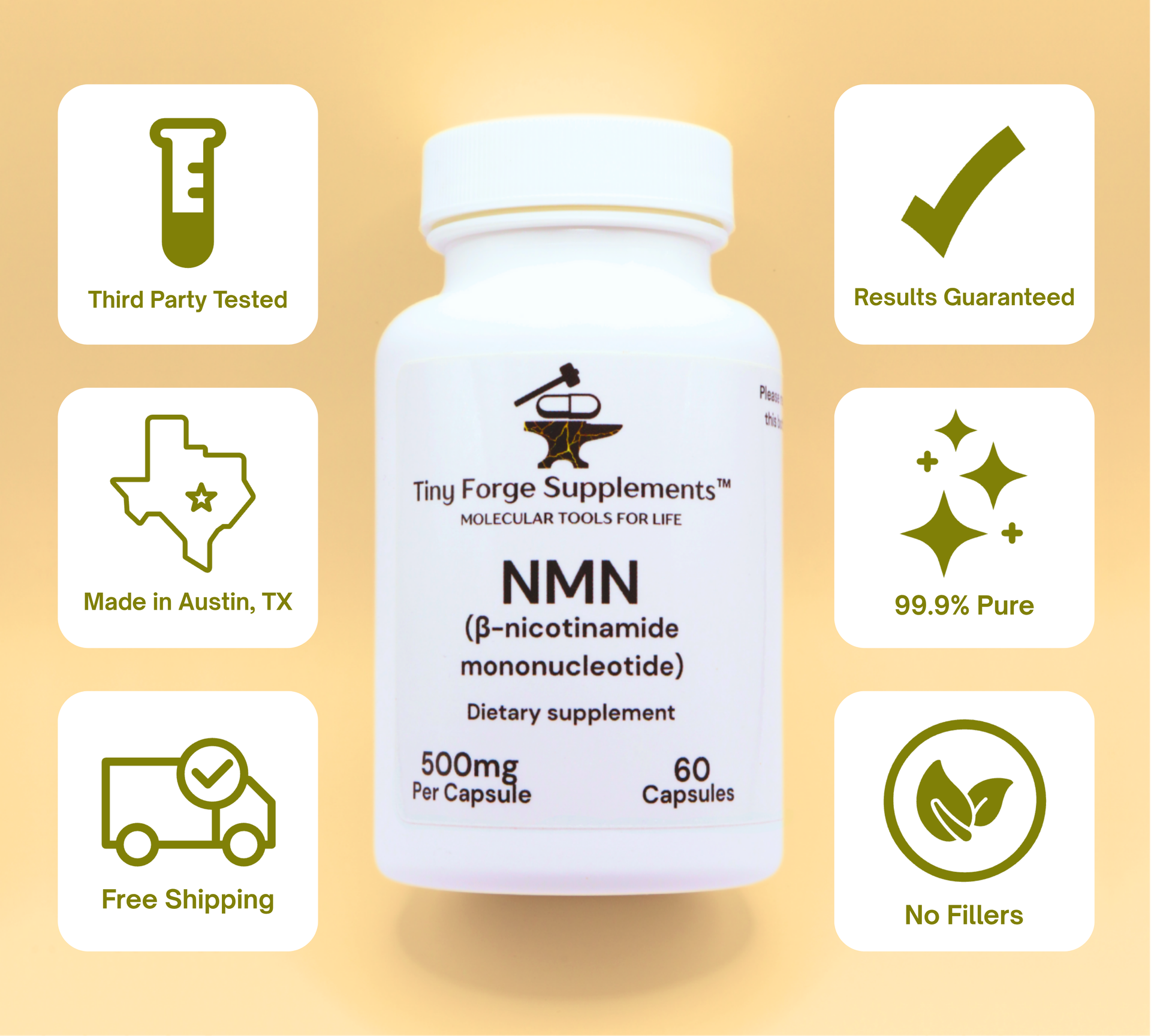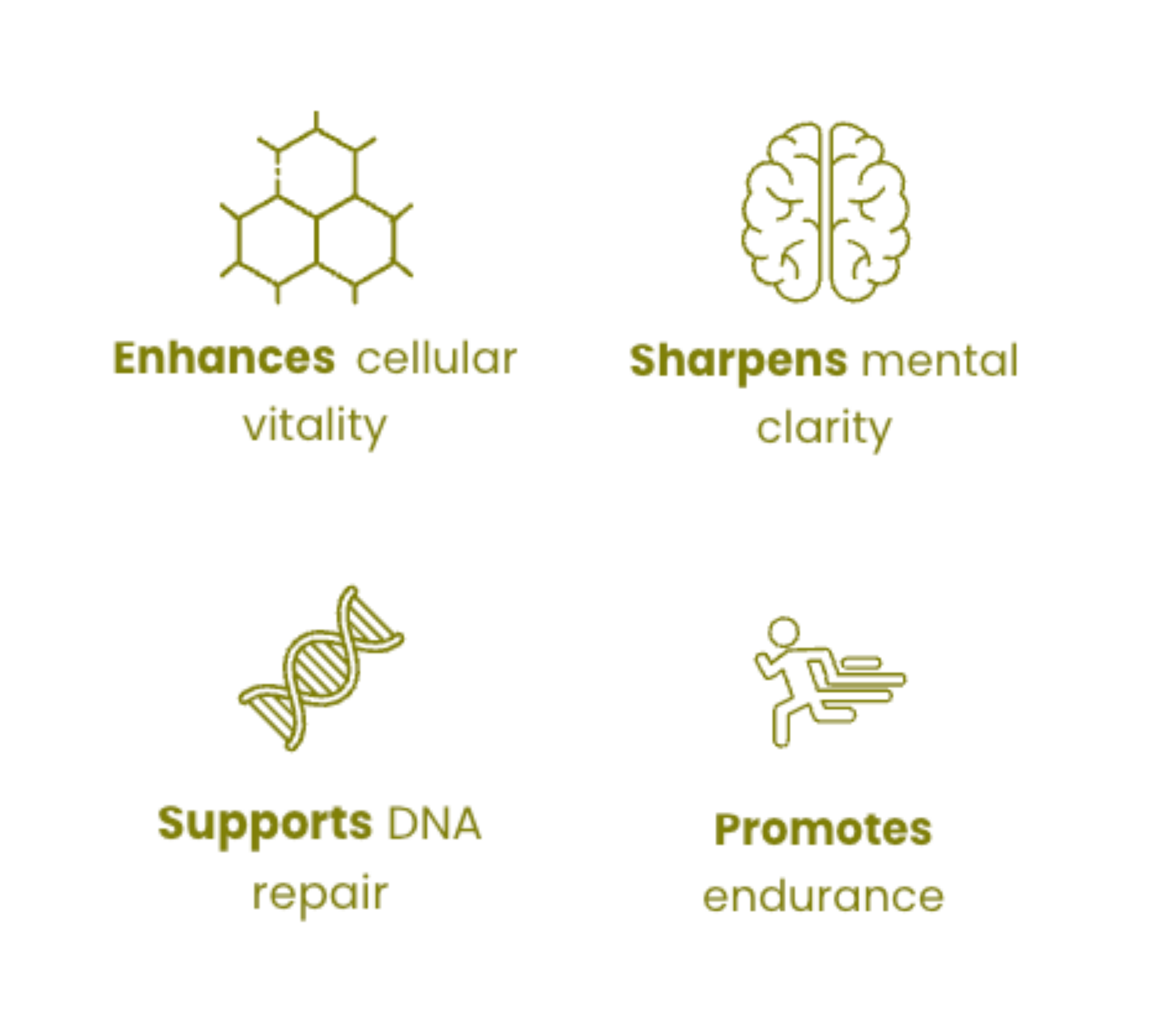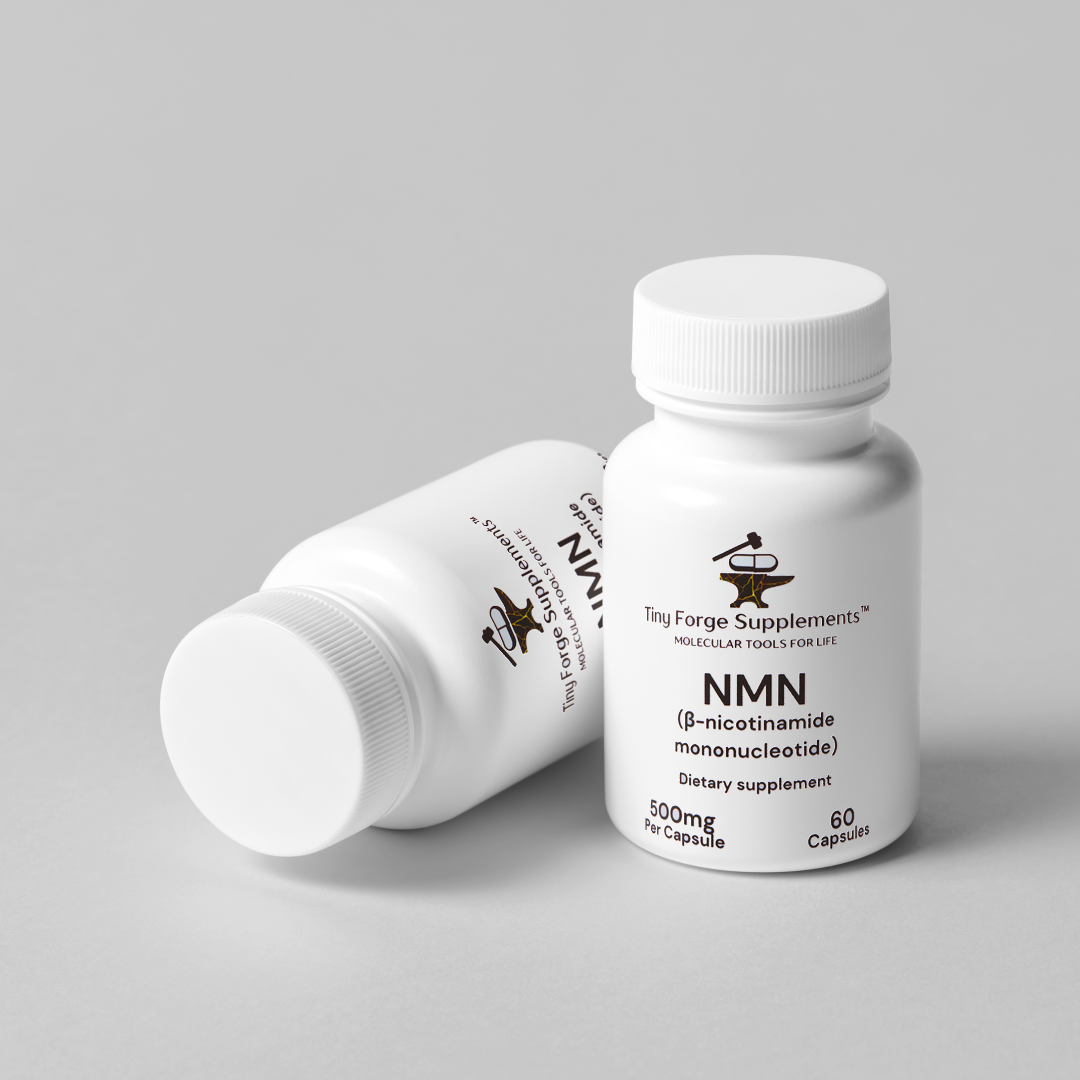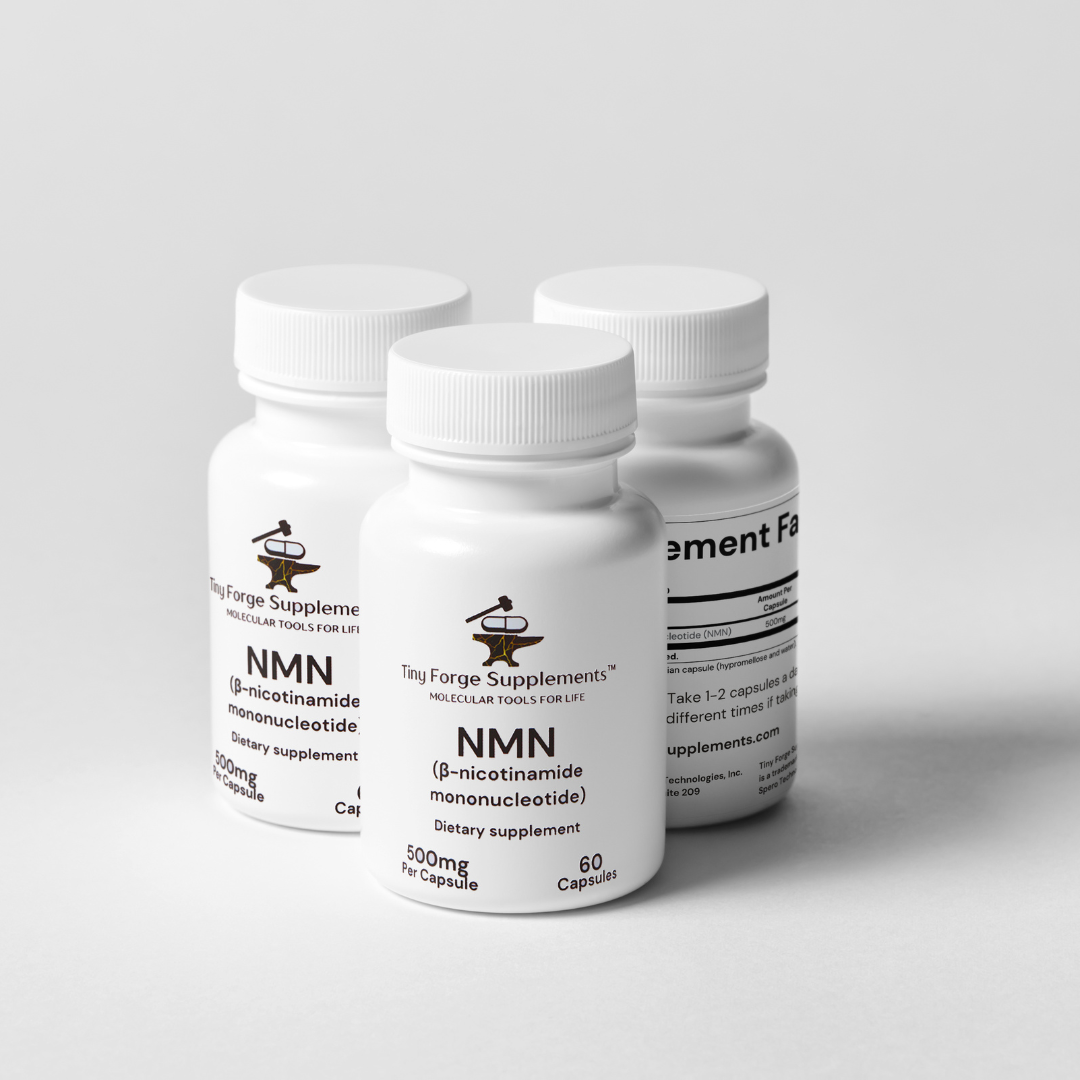Introduction
This is intended to be a semi-comprehensive review of our current understanding of NMN and the effects of supplementation in living cells and whole organisms.
While interesting and helpful, a deep understanding of the science surrounding NMN is not necessary to understand how it can be beneficial, so we’ve provided both a fully detailed description in the main body of this document and a critical points summary with the most important snippets directly below.
Critical Points
- NMN is a natural compound that has been extensively researched for many years.
- It is universally present in all living organisms.
- Normally, dietary NMN is found only in whole, fresh foods.
- The human digestive tract absorbs NMN very efficiently.
- NMN appears in only small quantities in the diet.
- The effects of NMN are due to directly increasing concentrations of a compound called NAD+ in the body.
- NAD+ bears the responsibility of handling and stabilizing the energy of the most powerful reactions in the cell.
- Increasing concentrations of NAD+ in the cell directly increases metabolic efficiency and decreases the frequency of mistakes.
- Mistakes in metabolism produce highly destructive molecules called free radicals, which damage the cell and cause oxidative stress.
- Damage and stress from metabolic “misfires” have been identified as critical factors of aging.
- Because NMN directly increases NAD+ concentrations and higher NAD+ concentrations reduce the rate of damage to the cell, NMN has been deemed an anti-aging supplement.
Unmatched Affordability
Cutting-Edge Technology
Proven Results
Customer-Centric Focus
NMN is a natural compound and has been extensively researched for many years as the most important precursor to one of the most important molecules in living cells (NAD+)[1].
It is universally present in all living organisms and most, including humans, are capable of synthesizing small quantities themselves [2].
Normally, dietary NMN is found only in whole, fresh foods. The human digestive tract absorbs NMN very efficiently because it is highly beneficial but appears in only small quantities in the diet; an entire head of lettuce contains about 2 mg of NMN, most fruits and vegetables contain similar concentrations [3][4].
The effects of NMN are due to it directly increasing concentrations of a compound called NAD+ in the body [1]. NAD+ is used by cells as a critical component of a class of metabolic reactions called reduction/oxidation (redox) reactions.
These are universally the energy-producing reactions of all known life. Indeed, plants use redox reactions to convert sunlight into energy, then the entire downstream food chain uses redox reactions to extract that energy from food. These are among the most powerful reactions in all of biology.
Redox reactions are characterized by the transfer of electrons from one molecule to another, and the role of NAD+ in that process is to store and carry those electrons between reactions.
This means that NAD+ bears the responsibility of handling and stabilizing the energy of the most powerful reactions in the cell. For this reason, NAD+ is fundamentally critical to all living things.
Increasing concentrations of NAD+ in the cell directly increases metabolic efficiency and decreases mistakes [5][6].
Because of the incredible amount of energy transferred in redox reactions, mistakes can be devastating. Like the power of an uncontrolled fire, the accidental release of this energy produces highly destructive molecules called free radicals, which damage the cell and cause oxidative stress [6].
This damage and stress from metabolic “misfires” have been identified as critical factors of aging, especially within the mitochondria [7]. Because NMN directly increases NAD+ concentrations and higher NAD+ concentrations reduce the rate of damage to the cell, NMN has been deemed an anti-aging supplement [8].
NMN holds such great therapeutic potential that a pharmaceutical company attempted to have it reclassified as a drug by the FDA in 2022, which would grant pharmaceutical companies the exclusive right to produce and sell it.
They were temporarily successful as the FDA banned NMN the same year, but the ban has since been lifted by a federal court due to concerns about the legality of the FDA’s behavior; that type of reclassification of a supplement is not part of the powers conferred to the FDA by federal law [9].
Enhances cellular vitality
Sharpens mental clarity
Supports DNA repair
Promotes endurance
In Conclusion
Because of the fundamental role of NAD+ in cell biology at large, the benefits of NMN are diverse. Nearly every health situation can benefit from the improved metabolism and decreased cellular stress seen with NMN supplementation.
For further research on the detailed findings of specific clinical trials exploring NMN, we recommend you visit a literature database such as PubMed (https://pubmed.ncbi.nlm.nih.gov/) and search “NMN clinical trials” or similar to start.
There have also been many, many interesting studies in cell cultures and animal models. To get started with these, search “NMN AND (cell OR culture OR media OR in vitro OR mouse OR rat)”.
References
- Yu, B., Jing, X., Jia, L., Wang, M., Liu, L., Ping, S., Wang, Y., & Yang, M. (2024). The versatile multi-functional substance NMN: its unique characteristics, metabolic properties, pharmacodynamic effects, clinical trials, and diverse applications. Frontiers in pharmacology, 15, 1436597. https://doi.org/10.3389/fphar.2024.1436597
- Lau, C., Niere, M., & Ziegler, M. (2009). The NMN/NaMN adenylyltransferase (NMNAT) protein family. Frontiers in bioscience (Landmark edition), 14(2), 410–431. https://doi.org/10.2741/3252
- Mills, K. F., Yoshida, S., Stein, L. R., Grozio, A., Kubota, S., Sasaki, Y., Redpath, P., Migaud, M. E., Apte, R. S., Uchida, K., Yoshino, J., & Imai, S. I. (2016). Long-Term Administration of Nicotinamide Mononucleotide Mitigates Age-Associated Physiological Decline in Mice. Cell metabolism, 24(6), 795–806. https://doi.org/10.1016/j.cmet.2016.09.013
- Nadeeshani, H., Li, J., Ying, T., Zhang, B., & Lu, J. (2021). Nicotinamide mononucleotide (NMN) as an anti-aging health product – Promises and safety concerns. Journal of advanced research, 37, 267–278. https://doi.org/10.1016/j.jare.2021.08.003
- Shi, C., Wen, Z., Yang, Y., Shi, L., & Liu, D. (2024). NAD+ metabolism and therapeutic strategies in cardiovascular diseases. Atherosclerosis plus, 57, 1–12. https://doi.org/10.1016/j.athplu.2024.06.001
- Klimova, N., Fearnow, A., & Kristian, T. (2020). Role of NAD+-Modulated Mitochondrial Free Radical Generation in Mechanisms of Acute Brain Injury. Brain sciences, 10(7), 449. https://doi.org/10.3390/brainsci10070449
- Yang, J., Luo, J., Tian, X., Zhao, Y., Li, Y., & Wu, X. (2024). Progress in Understanding Oxidative Stress, Aging, and Aging-Related Diseases. Antioxidants (Basel, Switzerland), 13(4), 394. https://doi.org/10.3390/antiox13040394
- Song, Q., Zhou, X., Xu, K., Liu, S., Zhu, X., & Yang, J. (2023). The Safety and Antiaging Effects of Nicotinamide Mononucleotide in Human Clinical Trials: an Update. Advances in nutrition (Bethesda, Md.), 14(6), 1416–1435. https://doi.org/10.1016/j.advnut.2023.08.008
- Natural Products Association. (2024, November 5). NPA Wins Huge Legal Victory Against FDA on NMN. NPA National. https://www.npanational.org/news/npa-wins-huge-legal-victory-against-fda-on-nmn/





